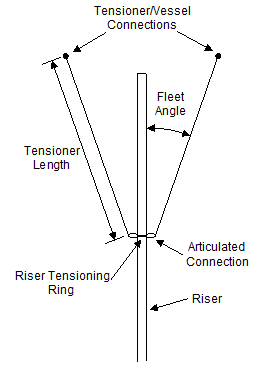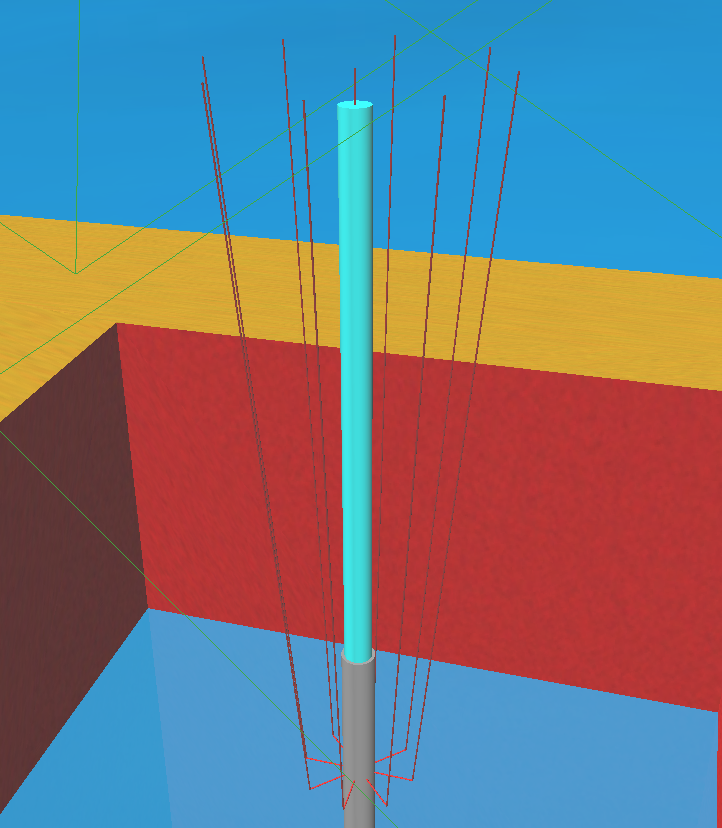The riser tensioning system is modelled using an arrangement of Non-Linear Elements to represent the individual tensioning lines. The tensioning lines are arranged symmetrically about the riser and connected to a slip ring via Hinge Elements at the nominated connection point. The tops of the tensioning lines are connected to the vessel. From the geometry, you may compute the nominal length and fleet angle of each of the tensioning lines. Each of the tensioning lines has a very low axial stiffness, allowing it to apply a constant tension to the riser irrespective of any increase or decrease in the length of the tensioning line. The tension applied by each line is given by the expression:
![]() (1)
(1)
where F is the tension in each tensioning line, T is the specified total vertical tension to be applied to the riser, n is the number of tensioning lines, and θ is the fleet angle. This ensures that the total vertical force applied to the riser is equal to the required top tension value. If you examine the Flexcom keyword file, you will see how Parameters and Equations have been used to compute the required parameters such as fleet angle, and tension within each line.
A schematic illustration of the riser tensioning system is as follows.

Riser Tensioning System Schematic
The tensioning lines are represented by mass-less beam elements, which are characterised by high bending and torsional stiffness coupled with a non-linear axial stiffness. A non-linear curve is used to specify an effectively constant (non-zero) tension in each of the lines for all deflections. The tensioner is modelled in this way in order to capture the changing orientation of the tensioning lines relative to the riser in the drift-off case. Modelling the top tension as a vertical point load might probably be sufficient in the normal operating mode analysis.

Riser Tensioning System modelled in Flexcom